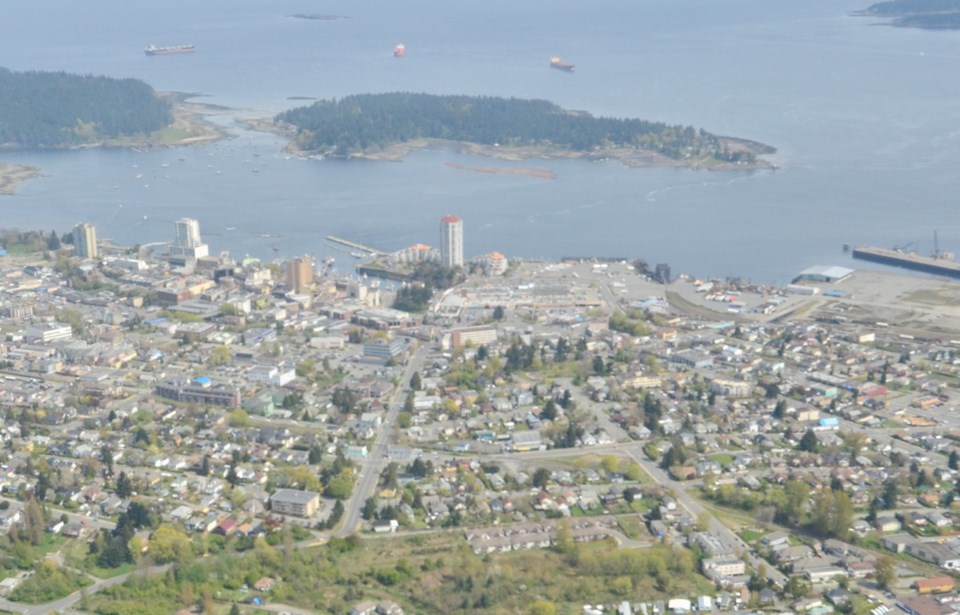Why is Nanaimo’s downtown important? How does downtown Nanaimo stack up against other downtowns? Is it worth investing in the downtown?
There is considerable evidence that as downtowns go, so do cities. If a city has a vibrant downtown, it usually has a vibrant economy and is a desirable place to live. For those who have travelled to Europe, it is frequently the downtowns of cities they find most memorable. Why is that?
Vibrant downtowns have a good mix of commercial and residential use. They are walkable, pleasant places that welcome pedestrians. Successful downtowns have an identity that sets them apart from the rest of the city.
The Canadian Urban Institute published a report examining several Canadian downtowns. The institute found that there were five common principles for flourishing downtowns: visibility, vision, prosperity, livability and strategy. The institute posed the following key questions for each principle:
Visibility: Does the city have an integral and central role in the life of the wider city?
Vision: Does the downtown benefit from many strong, bold leaders who collaborate to achieve and sustain a shared vision?
Prosperity: Does the downtown have a robust and innovative economy?
Livability: Is the downtown vibrant, livable and connected?
Strategy: Is the city investing strategically in its future?
By posing those questions in relation to Nanaimo, we can get a sense of how successful the downtown is. Each principle is rated for success.
Visibility: Until recently, Nanaimo’s downtown was the focus of city investment of resources and leadership. Key past decisions were made to invest in important downtown development initiatives (Port Theatre, Vancouver Island Conference Centre, waterfront walkway and associated activity). More recently, after that public investment, private investment occurred in the form of residential development (e.g., Pacifica on Front Street), office and mixed-use space (by WebMasters), as well as a revitalized Port Place Mall. All of the investment has created a fairly vibrant downtown. But recent inertia by City Hall has stalled the downtown. 2018 rating: B
Vision: Nanaimo had several organizations and people actively promoting the downtown, including the Downtown Nanaimo Business Improvement Association, which promoted downtown events, investment and attractive open space. One of its committees, the Planning Development Design Committee, advocated for quality urban design in the downtown. But, in January 2017, city council decided to stop supporting the improvement association and pulled funding for its important work. Notwithstanding many efforts by local groups and citizens to urge the city to energize Diana Krall Plaza, it remains off city council’s radar and continues to be a ‘void’ space. A plan is needed to connect the core downtown to the Old Quarter via Bastion Street Bridge. There is much work to do to create a vision for the future of the downtown. 2018 rating for vision: F
Prosperity: The downtown’s economy is not strong. There are several recently vacated buildings. There is much to do to recapture investment interest in the downtown, including continuing to promote increased downtown residential development and employment opportunities, such as knowledge-economy jobs that often locate in vibrant downtowns. Future redevelopment of the Commercial and Terminal Street lands and potential mixed-use (residential over commercial) development on the underutilized waterfront lands will help increase prosperity. But, there needs to be a dedicated group to lead that work. 2018 rating for prosperity: D
Livability: As someone who lives in the downtown and who has planned and designed many downtowns, I can attest to the potential livability of Nanaimo’s downtown. Thanks to the past work of the improvement association, it is a delightful, convenient, pedestrian-friendly place to live and shop. We were getting that one right. But the lack of current city council interest in the downtown threatens that past work. There is still much more to do. 2018 rating for livability: C
Strategy: Nanaimo completed a strategic plan for the downtown several years ago. Because the strategic plan is now several years old and is light on actions required to ensure that the downtown is prosperous and more livable, that plan should be revisited. There needs to be a refocus by the city on the downtown and more effort put into the development of detailed revitalization plans for key downtown sites, such as the Terminal Avenue and Commercial Street intersection and Diana Krall Plaza. 2018 rating for strategy: D
Downtown Nanaimo has much to be proud of: Maffeo-Sutton Park and sea-walk; Commercial Street chosen by the Canadian Institute of Planners as the 2011 Canadian Great Street; a vibrant, pedestrian-friendly and scaled core; significant investment in new and renovated buildings; and well-landscaped public spaces. But much of that work occurred in the previous 15 years.
The current city council has chosen to ignore the downtown. To achieve its full potential, the downtown will have to be a place where collaboration of private, public and non-government organization aspirations come together to enhance the downtown and, in that effort, make for a better and more livable Nanaimo. A first step in that work will be the need to reinvest in strategic areas that build capacity and address the urban institute’s five principles. Fortunately, there are models out there that point the way.
In my commentary next month, I will explore some of those models.
David Witty, PhD, is a founding member of the Planning, Design and Development Society of Nanaimo. He has worked on the revitalization of downtowns across Western Canada. This is Part 1 of a three-part series.



